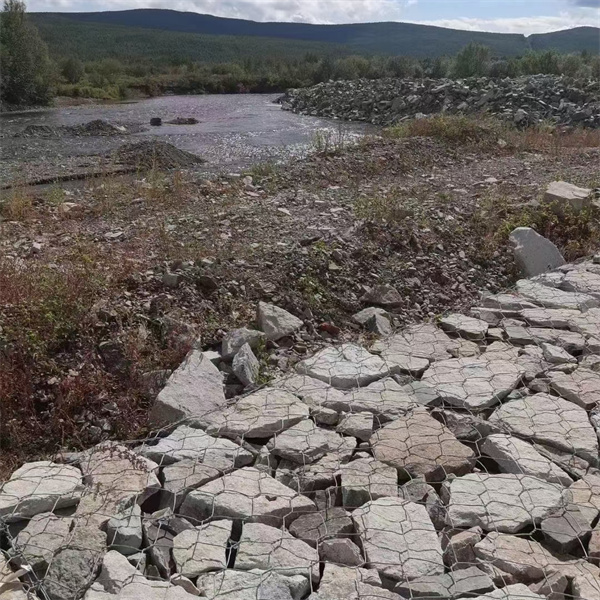dec . 04, 2024 07:17 Back to list
Factory Production of Gabion Cages for Retaining Wall Solutions and Applications
Gabion Cages for Retaining Walls An Innovative Solution in Modern Construction
In recent years, the construction industry has seen a growing interest in environmentally friendly and sustainable building materials. Among these innovative solutions, gabion cages have emerged as an effective and versatile option, particularly for retaining walls. Gabion cages are wire mesh containers filled with rocks, stones, or other materials, designed to maintain soil stability, control erosion, and create aesthetically pleasing structures. This article explores the benefits of using gabion cages for retaining walls and highlights their applications in modern construction.
Understanding Gabion Cages
Gabion cages are typically made from high-quality galvanized steel or PVC-coated wire, ensuring durability and resistance to corrosion. These cages come in various sizes and shapes, which can be assembled to fit different project requirements. Once constructed, they are filled with suitable materials such as local stones, gravel, quartz, or even recycled materials. This not only enhances the structural characteristics of the retaining wall but also promotes the use of sustainable resources.
Advantages of Gabion Cages in Retaining Walls
1. Cost-Effectiveness One of the most significant advantages of gabion cages is their affordability. They are relatively inexpensive compared to traditional retaining wall options made from concrete or bricks. Additionally, the ability to use local materials for filling reduces transportation costs and overall project expenses.
2. Environmental Benefits Gabion cages promote sustainability in construction by minimizing waste and utilizing natural materials. The porous nature of the cages allows for natural drainage, reducing water pressure behind the wall and preventing erosion. This permeability helps maintain the local ecosystem and supports vegetation growth, further enhancing the environmental benefits.
3. Versatility Gabion cages can be used in various applications, from small landscaping projects to large-scale civil engineering works. They can be easily adapted to suit different terrains and are particularly effective in areas with challenging soil conditions. Their modular design allows for intricate shapes and sizes, making them ideal for creative landscape architecture.
4. Aesthetic Appeal Gabion walls offer a unique look that can blend well with natural surroundings. The use of different types and sizes of stones allows for creative designs that can enhance the visual appeal of any project. Architects and landscape designers can incorporate gabion cages into their designs to create visually striking and functional spaces.
gabion cages for retaining walls factory

5. Stability and Durability Gabion cages provide excellent stability and can withstand various environmental conditions. They are designed to accommodate soil movement and shifting, reducing the risk of structural failure. When properly constructed, gabion retaining walls can last for decades with minimal maintenance.
Applications of Gabion Cages in Construction
Gabion cages have found a variety of applications in modern construction, particularly in the context of retaining walls
- Erosion Control Gabion walls are commonly used along riverbanks, slopes, and hilly terrains to combat soil erosion. They effectively absorb the energy of flowing water, reducing the impact of floods and preventing land degradation.
- Landscape Features In urban planning, gabion cages can be used to create beautiful landscape features such as seating areas, borders, and decorative walls. Their aesthetic versatility makes them a popular choice for parks, gardens, and recreational areas.
- Road Construction Gabion walls are often employed in road construction to create stable embankments that can withstand vehicular load while minimizing the risk of landslides.
- Retaining Soil in Construction Sites During construction projects, gabion cages can be temporarily or permanently used to retain soil. This is especially useful in areas where excavation is required, ensuring that the surrounding soil remains stable and intact.
Conclusion
Gabion cages, with their myriad of benefits, have established themselves as a viable option for constructing retaining walls in contemporary construction. Their cost-effectiveness, environmental sustainability, versatility, aesthetic appeal, and durability make them an innovative solution to meet the demands of modern infrastructure while fostering ecological balance. As the construction industry continues to evolve, the use of gabion cages is likely to grow, paving the way for more sustainable practices in building and landscape design. By harnessing the power of natural materials and innovative engineering, gabion cages represent a forward-thinking approach to retaining walls, offering both functionality and beauty in our built environment.
-
HESCO Gabion Baskets for Coastal Erosion Prevention
NewsAug.22,2025
-
Longevity and Durability of River Rock Gabion Walls
NewsAug.22,2025
-
How to Integrate Gabion 3D Walls in Urban Planning
NewsAug.22,2025
-
Reno Mattress Gabion Applications in Civil Engineering
NewsAug.22,2025
-
How to Install Wire Mesh for Gabion Baskets Properly
NewsAug.22,2025
-
Best Materials for Filling a Chain Link Gabion
NewsAug.22,2025
-
Wire Mesh Thickness Impact on Gabion Wall Load Bearing
NewsAug.12,2025






